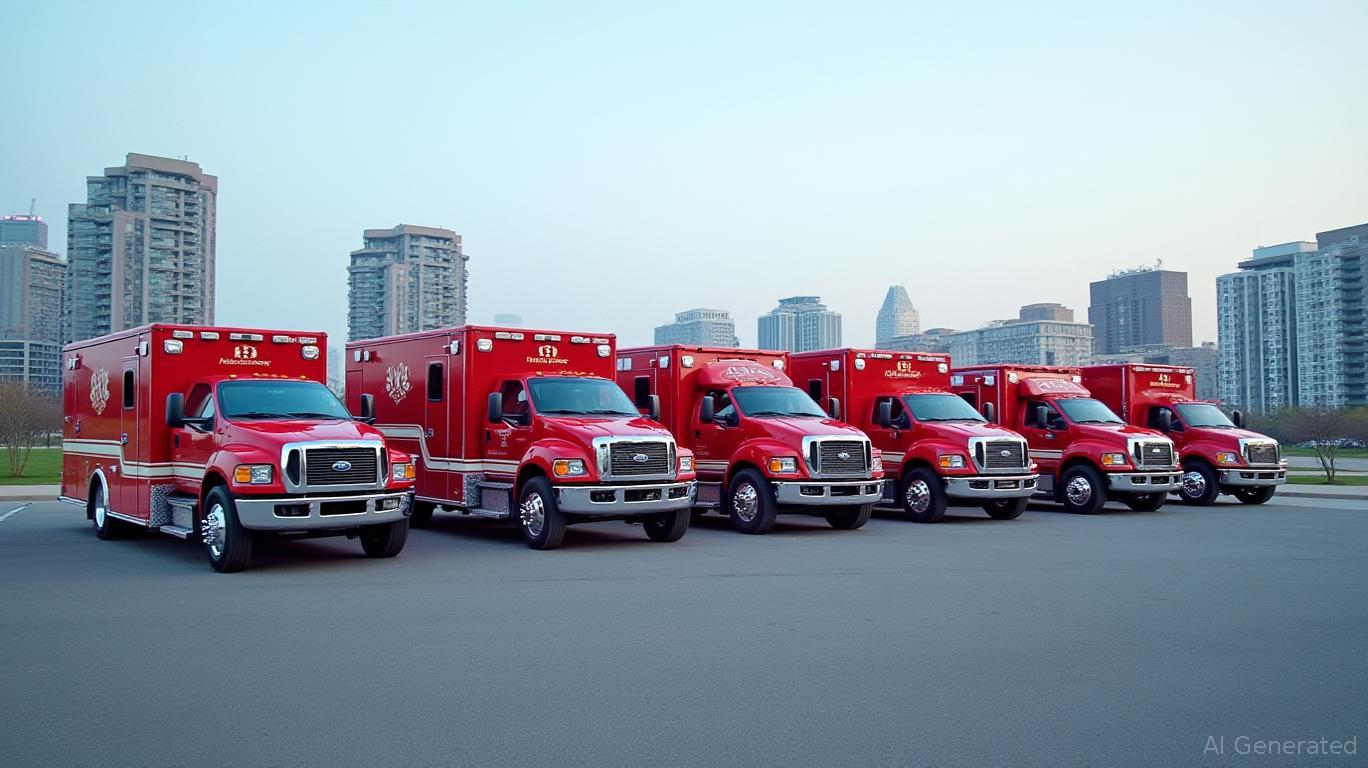REV Group's Stock Surge: A Deep Dive into Fundamentals and Long-Term Growth Catalysts
The recent surge in REV Group's stock price—up 14.5% in a single week—reflects a confluence of strong financial performance, strategic realignment, and sector tailwinds. As a leading manufacturer of specialty vehicles, including fire trucks, ambulances, and buses,
(REVG) is positioned at the intersection of rising demand for emergency services and public transportation infrastructure. This article examines the fundamentals driving the rally and evaluates the long-term growth prospects in the bus and coach manufacturing sector.
Recent Financial Performance: A Catalyst for Growth
REV Group's fiscal Q2 2025 results, released in late April, marked a turning point. Net sales reached $629.1 million, a 2% increase year-over-year, while Adjusted EBITDA surged 57% to $58.9 million, driven by robust performance in its Specialty Vehicles segment. The segment, which accounts for 72% of revenue, saw sales grow 12% organically (excluding divested bus operations), fueled by strong demand for fire apparatus and ambulance units. This growth was amplified by a $4.3 billion backlog, up 6.6% year-over-year, signaling sustained demand for its mission-critical vehicles.
The company's decision to exit the non-motorized travel trailer business (via the sale of Lance Camper) further sharpened its focus on high-margin segments. CEO Mark Skonieczny emphasized operational improvements, including a 30% increase in fire truck production capacity over two years, which has reduced lead times and boosted throughput. These efficiencies, combined with pricing power and cost controls, have enabled Adjusted EBITDA margins to expand to 9.4%, up from 6.1% in the prior year.
Segment Analysis: Strengths and Weaknesses
The Specialty Vehicles segment is the clear engine of growth. Fire apparatus and ambulance sales benefited from rising municipal spending on public safety infrastructure, while price realization (due to cost pass-through and premium product mix) added further margin resilience. Conversely, the Recreational Vehicles (RV) segment faced headwinds, with sales down 2.4% due to dealer incentives and weak retail demand. Management acknowledged these challenges but noted that the RV business now represents only 28% of revenue—a strategic reduction that minimizes its drag on overall performance.
Industry Tailwinds: Bus and Coach Manufacturing's Long-Term Catalysts
The bus and coach sector is experiencing a renaissance, driven by:
- Public Transportation Investment: Governments globally are prioritizing infrastructure spending. In the U.S., the Infrastructure Investment and Jobs Act (2021) allocated $7.5 billion to replace aging transit buses, directly benefiting manufacturers like REV Group.
- Electric Vehicle (EV) Transition: REV's shift toward hybrid and electric emergency vehicles aligns with regulatory mandates. For example, California's Air Resources Board requires all new transit buses to be zero-emission by 2030, creating demand for specialized EV platforms.
- Disaster Preparedness: Rising climate-related emergencies (e.g., wildfires, hurricanes) are driving demand for advanced fire apparatus and emergency response vehicles.
Strategic Moves and Capital Allocation
REV Group's capital allocation strategy reinforces its growth thesis. In Q2, the company repurchased $88 million in shares, leaving $142 million remaining under its $230 million program. Additionally, a $0.06 quarterly dividend (annualized to $0.24) underscores management's confidence in free cash flow generation. A $20 million investment in its Brandon, South Dakota facility aims to boost ambulance production capacity, directly addressing the backlog.
Risks and Challenges
Despite its momentum, REV faces risks:
- Tariffs and Inflation: Imported Class B van chassis (used in RVs) face $5 million in tariffs, while specialty vehicle material costs could rise $10 million in 2025. Management plans to mitigate this by shifting sourcing to domestic suppliers.
- RV Segment Volatility: Soft demand and dealer incentives remain a concern, though April's modest retail sales rebound offers cautious optimism.
- Competition: Rival manufacturers like Oshkosh Corp. (OSK) and Thyssenkrupp could intensify pricing pressure in certain segments.
Investment Analysis: Valuation and Outlook
At its June 6 closing price of $45.13, REV Group trades at 14.4x forward EV/EBITDA, below its five-year average of 16.8x. This discount reflects near-term RV headwinds but presents an opportunity to capitalize on Specialty Vehicles' long-term growth. Key catalysts for upside include:
- Backlog Conversion: The $4.3 billion backlog could drive revenue visibility through 2026.
- Margin Expansion: Operational efficiencies and tariff mitigation could push margins to 10–12% by fiscal 2026.
- EV Adoption: Early mover advantage in hybrid/emergency vehicle electrification could solidify market share.
Conclusion: A Buy with a Long-Term Horizon
REV Group's stock surge is no fluke. Its Specialty Vehicles segment's dominance, paired with strategic divestitures and capital discipline, positions it to capitalize on secular trends in emergency response and public transit. While near-term risks in the RV segment and tariffs warrant caution, the company's backlog and infrastructure tailwinds suggest long-term investors could see 20–25% annualized returns over the next three years.
For conservative investors, a buy-and-hold strategy with a 12–18 month horizon makes sense. Aggressive investors might consider scaling into dips below $40, with a price target of $55–60 by early 2026, assuming backlog conversion and margin expansion. As Skonieczny noted, “We're not just building vehicles—we're building safer, more resilient communities.” In doing so, REV Group is building a compelling case for sustained growth.

Comments
No comments yet